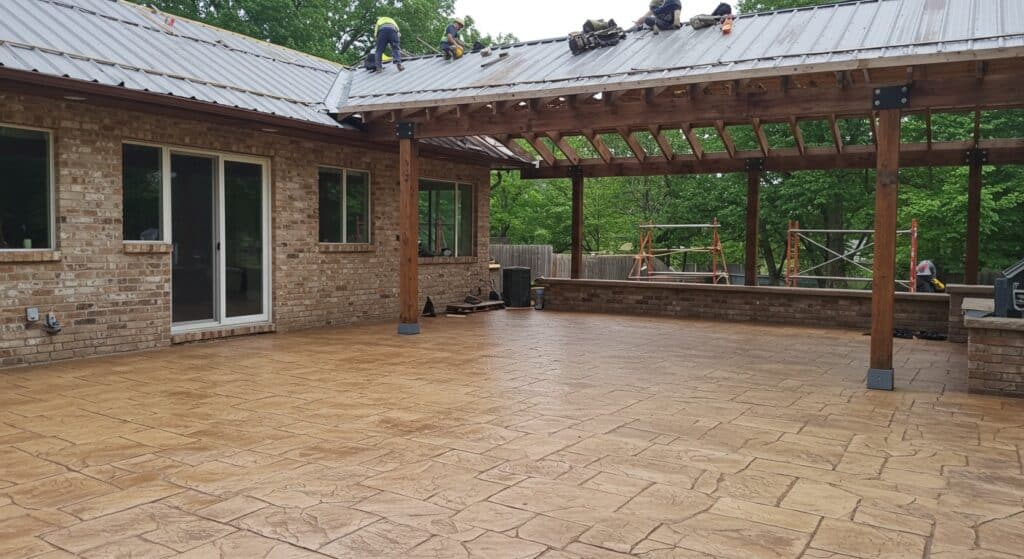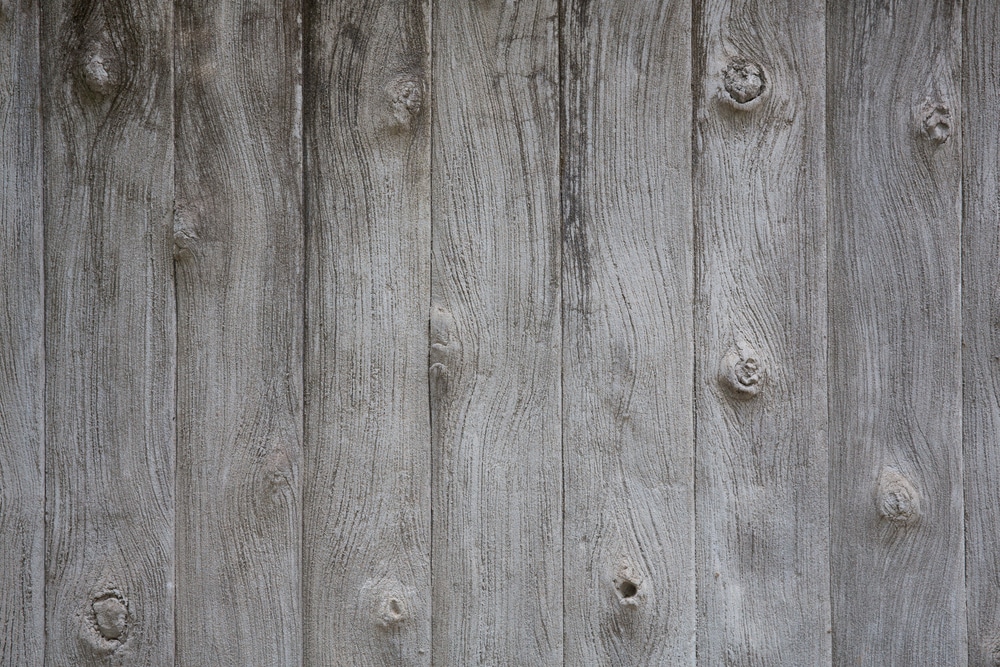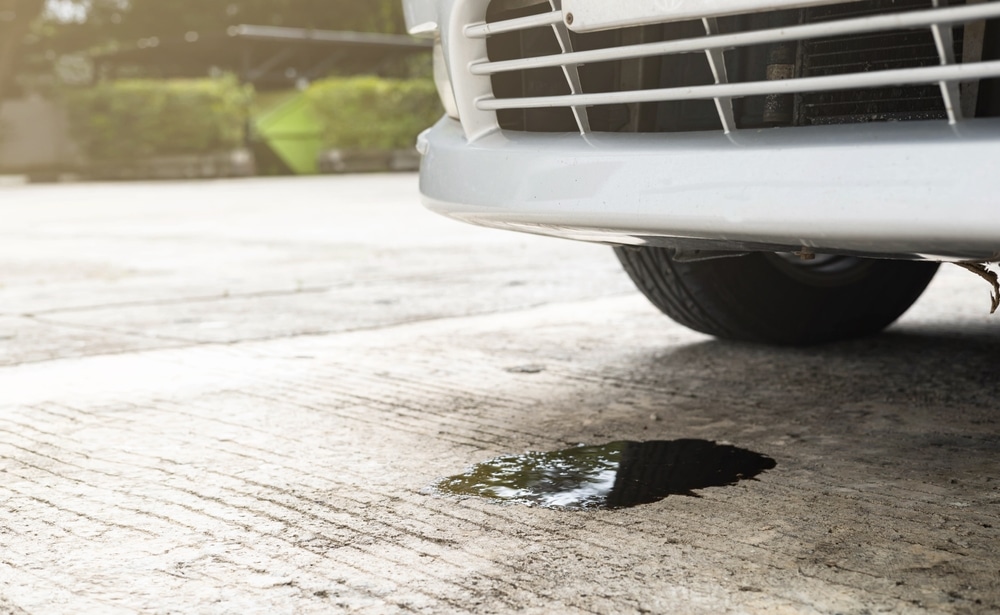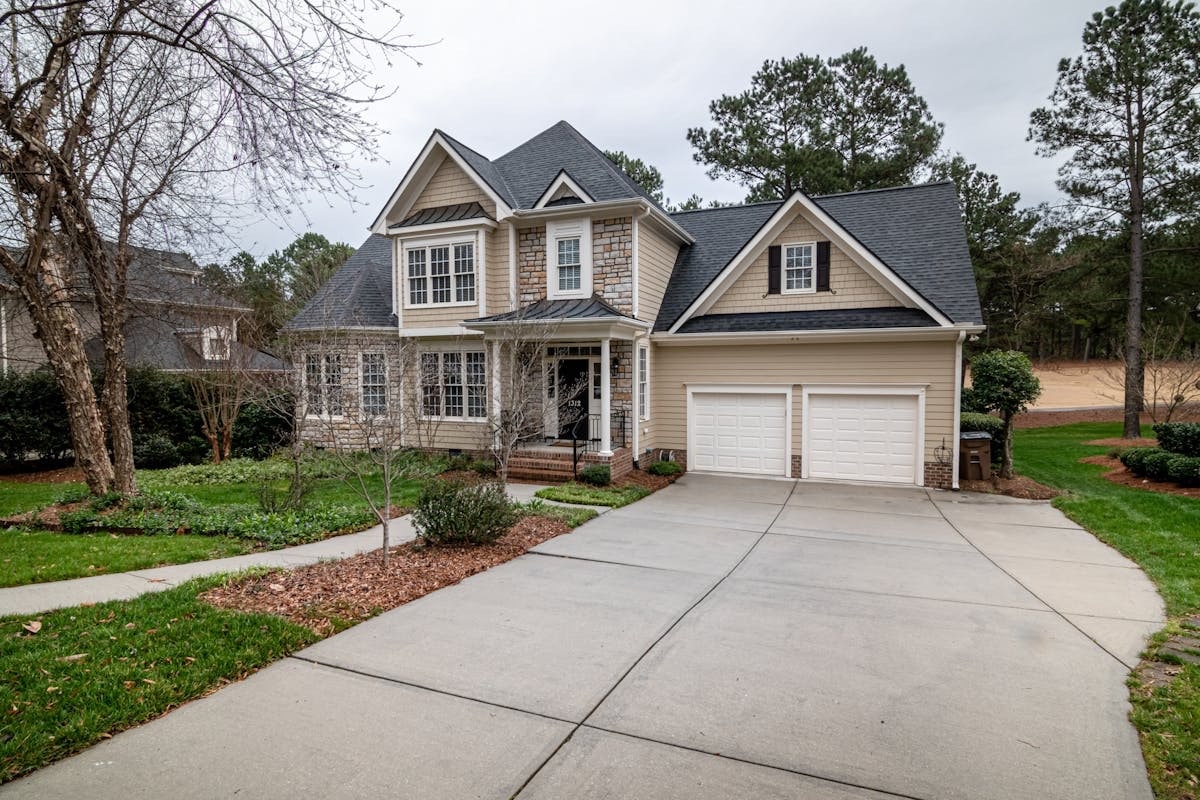How Much Does a Stamped Concrete Patio Cost?
July 8, 2025Creating an outdoor living space that combines beauty, durability, and value is a top priority for many homeowners. Stamped concrete patios have become increasingly popular as they offer the aesthetic appeal of more expensive materials like natural stone or brick but at a fraction of the cost. If you’re considering enhancing your outdoor area with a stamped concrete patio, understanding the cost factors is essential for proper budgeting and planning.
According to recent industry data from 2024, stamped concrete patios remain one of the most cost-effective options for creating an elegant outdoor space while providing exceptional durability. In this comprehensive guide, we’ll break down all the factors that influence stamped concrete patio costs, from basic material expenses to design complexity, so you can make an informed decision about your outdoor renovation project.
Understanding Stamped Concrete Basics
Stamped concrete is a specialized technique that transforms ordinary concrete into decorative surfaces mimicking high-end materials. The process involves pouring slab concrete, adding color, applying a release agent, and then stamping patterns before the concrete fully cures. The versatility of stamped concrete allows homeowners to achieve the look of expensive materials like slate, flagstone, brick, or even wood at a more affordable price point.
What makes stamped concrete particularly appealing is its combination of aesthetics and practicality. Unlike individual pavers or natural stone that can shift, settle, or allow weeds to grow between pieces, stamped concrete creates a solid, continuous surface that requires less maintenance over time. Additionally, modern advancements in concrete technology have dramatically improved the durability and color retention of stamped concrete installations.
When considering a stamped concrete patio from Bison Concrete, you’re investing in a surface that can last 25+ years with proper installation and maintenance. This longevity factor is crucial when calculating the true cost of your outdoor living space over time. The initial investment may be higher than basic concrete, but the extended lifespan and reduced maintenance needs often result in better long-term value compared to other options that require frequent replacement or repairs.
Average Cost Breakdown for Stamped Concrete Patios
The national average cost for stamped concrete patios typically ranges between $12 and $20 per square foot as of 2025, though this can vary significantly based on your location, design complexity, and specific requirements. For context, a basic 300 square foot patio might cost between $3,600 and $6,000, while more elaborate designs with custom features could reach $8,000 or more.
Breaking down these costs helps understand where your money goes:
- Base concrete material: $5-$7 per square foot
- Color additives: $1-$3 per square foot
- Pattern stamps and release agents: $2-$4 per square foot
- Labor costs: $4-$8 per square foot
- Sealer application: $0.50-$1 per square foot
Geographic location plays a significant role in pricing. In regions with higher labor costs or where materials must be transported longer distances, prices can increase by 10-30%. For example, urban areas typically command higher prices than rural locations due to increased labor costs and permits.
It’s worth noting that these figures represent mid-range options. Basic stamped concrete with simple patterns and minimal coloring might start around $10 per square foot, while highly customized designs with multiple colors, border details, and special finishes can exceed $25 per square foot. Working with experienced contractors like those at Bison Concrete ensures you’re getting quality workmanship that will stand the test of time, regardless of your budget level.
Factors That Influence Stamped Concrete Patio Costs
Several key factors can significantly impact the final cost of your stamped concrete patio project:
Size and Layout Complexity
The total square footage is the most obvious cost factor, but layout complexity matters too. Rectangular or square patios with straight edges are more economical than curved or irregularly shaped designs that require additional formwork and labor. Projects requiring extensive excavation or working around existing structures like pools or gardens will also increase costs.
Pattern and Design Selection
The pattern you choose directly impacts pricing. Basic patterns like ashlar slate or running bond brick typically cost less than intricate designs mimicking natural stone or custom patterns. Multi-pattern projects or those incorporating decorative borders require additional time and expertise, increasing labor costs by 15-25%.
Color Techniques and Complexity
Color options range from simple single-color applications to elaborate multi-color designs:
- Integral color (mixed throughout the concrete): Adds $1-$3 per square foot
- Dry-shake color hardener (applied to surface): Adds $2-$4 per square foot
- Acid staining or antiquing: Adds $2-$5 per square foot
- Multiple colors or hand-applied accents: Adds $3-$7 per square foot
Additional Features and Customizations
Special features can enhance your patio’s functionality and appearance but will increase costs:
- Saw-cut designs or decorative borders: $5-$15 per linear foot
- Built-in steps: $300-$500 per step
- Raised edges or seat walls: $50-$75 per linear foot
- Integrated drainage systems: $500-$1,500 depending on complexity
Considering these factors during the planning phase helps create a more accurate budget for your project. Discussing your vision with professional installers allows them to suggest cost-effective alternatives that maintain your desired aesthetic while respecting your budget constraints.
Comparing Stamped Concrete to Alternative Patio Materials
Understanding how stamped concrete compares to other popular patio materials can help determine if it’s the right choice for your budget and aesthetic preferences. Here’s how the costs stack up against alternatives based on 2025 pricing data:
| Material | Average Cost/Sq Ft | Lifespan | Maintenance Level |
| Basic Concrete | $6-$12 | 30+ years | Low |
| Stamped Concrete | $12-$20 | 25+ years | Low-Medium |
| Concrete Pavers | $15-$25 | 25+ years | Medium |
| Natural Stone | $20-$30 | 25+ years | Medium |
| Brick | $15-$22 | 25+ years | Medium-High |
| Wood Decking | $15-$35 | 10-15 years | High |
While stamped concrete isn’t the least expensive option upfront, its combination of aesthetics, durability, and maintenance requirements makes it a value-conscious choice for many homeowners. Basic concrete may be cheaper initially, but lacks the decorative appeal of stamped concrete. Natural stone offers premium aesthetics but at significantly higher costs.
One particularly attractive aspect of stamped concrete is its versatility in mimicking more expensive materials. For example, a natural stone patio might cost $9,000 for a 300 square foot area, while a stamped concrete version could achieve a similar look for around $5,400, representing a 40% savings. Similarly, those interested in the warm look of wood might find that stained concrete floors offer significant advantages over wood in terms of durability and maintenance.
When making your decision, consider both short-term budget constraints and long-term value. While wood decking might have similar initial costs to stamped concrete, its shorter lifespan and higher maintenance requirements make it more expensive over time.
Hidden Costs and Budget Considerations

When planning your stamped concrete patio project, several potential hidden costs should be factored into your budget:
Site Preparation Requirements
Proper site preparation is crucial for a long-lasting patio. Depending on your property’s conditions, you might need:
- Excavation and grading: $500-$1,500
- Removal of existing structures: $500-$2,000
- Soil stabilization for problematic areas: $1,000-$3,000
- Drainage solutions: $500-$2,500
Sealing and Maintenance Costs
While often overlooked in initial budgeting, sealing is essential for protecting your investment:
- Initial sealing (typically included in installation): $0.50-$1 per square foot
- Resealing every 2-3 years: $0.50-$1 per square foot
- Annual cleaning and maintenance: $100-$300
Permit and Inspection Fees
Depending on your location, you may need permits for your patio project:
- Building permits: $100-$500
- Inspection fees: $150-$300
- HOA approval fees (if applicable): Varies widely
Seasonal Timing Considerations
The time of year you schedule your project can affect pricing. Many contractors offer off-season discounts of 10-15% during slower periods (typically late fall or winter in most regions). However, weather constraints might extend project timelines during these periods.
To protect yourself financially, experts recommend setting aside a contingency budget of 10-15% beyond the quoted price to cover unexpected expenses. Additionally, be wary of quotes that seem significantly lower than others, as they may not include necessary steps like proper base preparation or quality sealing, which could lead to costly repairs later. Discussing these potential costs upfront with your contractor ensures a more accurate budget and helps avoid surprise expenses during your project.
DIY vs. Professional Installation Cost Analysis
Many homeowners consider DIY installation to save on labor costs, which typically account for 40-50% of a stamped concrete project. However, this approach comes with significant considerations:
DIY Cost Breakdown
For a typical 300 square foot patio, DIY material costs would include:
- Concrete materials: $1,500-$2,100
- Color additives and release agents: $300-$900
- Pattern stamps (rental): $200-$400
- Tools and equipment rental: $300-$700
- Sealer and application materials: $150-$300
- Total DIY materials: $2,450-$4,400
This represents a potential savings of $1,150-$2,600 compared to professional installation. However, these figures don’t account for the value of your time or the potential for costly mistakes.
The Real Cost of DIY Stamped Concrete
Stamped concrete installation requires specialized knowledge, proper timing, and experience that most homeowners lack. The process must be completed within a narrow timeframe after pouring, and mistakes can’t easily be corrected. Common DIY issues include:
- Inconsistent coloring or pattern depth
- Surface cracks due to improper curing
- Poor sealer application causing discoloration
- Structural problems from inadequate base preparation
The cost to repair these issues often exceeds the initial savings, with major repairs potentially costing $2,000-$5,000 or even requiring complete replacement. Additionally, DIY installations typically lack the warranties that professional installations offer.
For those interested in saving costs while maintaining quality, learning how to stain concrete on a budget might be a more accessible DIY project with fewer risks than stamped concrete installation.
Finding Value in Professional Installation
Professional installation ensures proper technique, timing, and materials. Experienced contractors have specialized tools, efficient processes, and the knowledge to handle unexpected challenges. When selecting a contractor, look for:
- Extensive portfolio of completed projects
- Strong customer reviews and references
- Appropriate licensing and insurance
- Detailed written estimates and contracts
- Clear warranty terms
The premium paid for professional installation typically delivers better results, longer lifespan, and peace of mind that your investment is protected. Most industry experts strongly recommend professional installation for stamped concrete patios, particularly for projects larger than 100 square feet.
Maintenance Costs and Long-Term Value

Proper maintenance is essential for preserving both the appearance and structural integrity of your stamped concrete patio. Understanding these ongoing costs helps assess the true lifetime value of your investment.
The primary maintenance requirement for stamped concrete is periodic resealing. While the initial sealer application is typically included in installation costs, resealing is needed every 2-3 years depending on climate conditions and usage patterns. This service costs approximately $0.50-$1 per square foot, meaning a 300 square foot patio would require $150-$300 for each resealing.
Beyond sealing, regular maintenance includes:
- Routine cleaning with mild soap and water: Minimal cost
- Power washing (recommended annually): $100-$200 per service
- Crack repairs (if needed): $5-$10 per linear foot
- Color refreshing (every 5-10 years): $2-$4 per square foot
When comparing long-term costs with alternatives, stamped concrete often provides excellent value. For example, while wood decking might have similar initial costs, it typically requires staining every 1-2 years, board replacements, and complete renovation every 10-15 years. Similarly, pavers may need periodic resetting and replacement of damaged pieces, plus regular weed control between joints.
A stamped concrete patio’s long-term value is further enhanced by its potential to increase property values. According to real estate data from 2024, well-designed outdoor living spaces can recover 65-80% of their installation costs at resale. Stamped concrete’s aesthetic appeal combined with its durability makes it particularly attractive to prospective buyers looking for low-maintenance outdoor spaces.
Frequently Asked Questions
How long does a stamped concrete patio typically last?
With proper installation and maintenance, a stamped concrete patio can last 25–30 years or more. Quality materials, sealing, and climate-appropriate installation methods are key to its longevity.
Will my stamped concrete patio crack over time?
Concrete may develop minor cracks over time, but proper installation with control joints and reinforcement minimizes this risk. Most small cracks are cosmetic and can be repaired during regular maintenance.
How does climate affect stamped concrete patio costs and durability?
Climate impacts both cost and durability—freeze-thaw regions require specialized mixes and reinforcement, while hot climates need careful curing and UV protection. These factors can increase installation costs but help extend the patio’s lifespan.
Can I install a stamped concrete patio over an existing concrete slab?
Yes, if the existing slab is in good condition, a stamped overlay can be applied for less cost than a full replacement. However, slabs with major cracks or drainage issues typically need to be removed and replaced.
How do seasonal factors affect stamped concrete patio pricing?
Prices are higher during peak season (spring/summer) due to demand, while fall and winter may offer discounts. Booking in advance or during the off-season can help you save on both materials and labor.
Is a Stamped Concrete Patio Right for You?
Investing in a stamped concrete patio represents a balance of upfront costs and long-term value that many homeowners find appealing. With average costs ranging from $12-$20 per square foot, stamped concrete delivers the aesthetic appeal of premium materials like natural stone or brick at a significantly lower price point. The factors influencing your specific project costs – from size and pattern complexity to your regional labor market – all play important roles in determining your final investment. By understanding these variables and planning accordingly, you can create a beautiful, durable outdoor living space that enhances both your lifestyle and property value for decades to come. For the best results, consult with experienced professionals who can guide you through design options that align with both your vision and budget constraints.
About Bison Concrete
Bison Concrete specializes in stamped concrete patios designed for beauty, durability, and long-term value. Serving homeowners across Oklahoma, we create custom patio surfaces that mimic stone, brick, or tile at a fraction of the cost.Ready to upgrade your outdoor space? Contact Bison Concrete for a free stamped patio estimate today.
Interested in our services?
Get a free quote today!
Don’t wait to start your next construction project! Whether it’s a custom build, a renovation, or a repair, Bison Concrete is here to turn your ideas into reality.



